
Do you have a question about the Kenwood DNX6980 and is the answer not in the manual?
Guidelines for preventing lens fogging and proper disc handling to ensure optimal performance.
Precautions for safe unit operation, battery handling, and monitor protection to prevent damage or injury.
Instructions for cleaning the unit's faceplate using appropriate materials to avoid damage.
Information regarding the cartography used by the navigation system and data sources.
Steps to power on the unit and perform initial setup before first use.
Procedure for safely powering down the navigation system unit.
Critical precautions to prevent injury or fire during installation and operation.
Important cautions to avoid injury or property damage from potentially hazardous situations.
Guidelines for preserving vehicle battery life when using the navigation system.
Identification and function of buttons on the front panel for DNX7180/DNX7480BT models.
Step-by-step instructions for inserting and ejecting SD cards for map updates.
Detailed descriptions of each front panel button's function and operation.
Identification and function of buttons on the front panel for DNX6980/DNX6180/DNX6040EX/DNX6480BT/DNX5180.
Instructions for inserting and ejecting MicroSD cards for map updates.
Detailed descriptions of each front panel button's function for DNX6/5 models.
Common functions accessible from most screens, including menu navigation.
How to navigate and interact with list screens.
Using touch gestures for scrolling through lists and menus.
Steps to access the primary navigation interface.
Overview of the main menu options for navigation.
Procedure for inputting destinations and starting route guidance.
How the system guides you to your destination and recalculates routes.
Instructions for adding via points and navigating around road closures.
Manually avoiding traffic and viewing traffic map data.
Procedure for updating system software and map data.
Instructions for connecting iPods, USB devices, CDs, and disc media.
On-screen controls for playing, pausing, and skipping music tracks.
Methods for searching and selecting music tracks from connected media.
Instructions for connecting media devices for movie and picture playback.
On-screen controls for managing movie and picture playback.
Basic steps to access and operate the radio tuner.
How to search for stations and store them in memory.
Steps to pair and connect a cell phone for Bluetooth functionality.
Procedure to download contact information from the cell phone.
Options for initiating phone calls: by number, records, phonebook, or presets.
Safety warnings and cautions to observe before installing the unit.
Important notes and practical tips for a successful installation.
List of supplied accessories and the sequence for wiring connections.
Specific instructions for installing the unit in non-Japanese vehicles.
Instructions for attaching the escutcheon and car bracket.
Step-by-step guide for removing the front panel trim (escutcheon).
Instructions for safely detaching and removing the main navigation unit.
Diagram and instructions for connecting speaker wires.
Wiring for parking sensor, reverse sensor, antenna, microphone, and GPS.
Connections for ignition, battery, ground, steering remote, dimmer, and other signals.
Diagrams for connecting AV sources and cameras.
Wiring for audio pre-amplified outputs and subwoofer connection.
Connecting iPods, USB devices, and AV accessories.
Connecting SIRIUS/XM, HD Radio tuners, and Bluetooth adapters.
Information regarding FCC and Industry Canada compliance.
Detailed compliance statements for FCC, IC, and battery content.
Information regarding Class 1 Laser Product safety.
Explanation of how to interpret manual structure, icons, and notations.
Instructions for powering on the DNX7 series navigation unit.
Instructions for powering on the DNX6/5 series navigation unit.
Setting display language and monitor angle.
Configuring iPod interface, display color, external switch, and camera.
Finalizing the initial setup process by touching the Finish button.
Instructions for inserting, playing, and ejecting music CDs and disc media.
Steps for connecting and disconnecting USB storage devices.
Instructions for connecting and disconnecting iPods.
Overview of functions accessible from the main Top Menu screen.
How to customize the Top Menu by dragging and rearranging icons.
Using Menu, Return, and common menu keys for navigation.
Interacting with list screens and understanding associated keys.
Steps to activate and display the navigation system.
Overview of the core functions available in the navigation main menu.
Procedure for inputting destinations and starting route guidance.
How to toggle between navigation, audio, and video display modes.
Procedure to revert to the complete navigation display.
Explanation of on-screen information and basic playback controls.
Details on repeat, hide keys, fast forward/backward, and time confirmation.
How to search content and use menu display functions.
Explanation of functions for search, play/pause, slow motion, stop, PBC, Setup, Audio, EXT SW.
Instructions for interacting with the DVD menu and its options.
Options for selecting different DVD playback modes.
Changing subtitle/audio language and controlling video zoom ratio.
How to use the zoom function for DVD and VCD playback.
Details on setting language, dynamic range, angle, screen ratio, parental level, and disc setup.
Setting menu, subtitle, and audio language for DVD playback.
Establishing parental control levels to restrict content.
Configuring CD read mode and on-screen display behavior.
Overview of basic playback for music, video, and picture files.
Accessing various media functions like search, playback, and switching.
How to search files and manage display options.
Understanding the interface for USB and iPod playback.
Using menus for controlling USB and iPod playback.
Methods for searching and selecting picture and video files.
Controls for interacting with picture and video playback.
Functions for search, playback, disconnect, setup, audio, and external switch.
Details on repeat, search, fast forward/backward, and random playback.
Techniques for searching media files using lists and other criteria.
Specific search types for finding media by category, link, folder, or thumbnail.
Searching media files by selecting categories.
Searching media files based on artist, album, genre, or composer.
Browsing and selecting media files within folders.
Locating and viewing picture files.
Using album artwork to find music files.
How to create playlists of favorite albums and manage them.
Changing subtitle language, audio language, and exiting menus.
Navigating the Pandora internet radio interface and its controls.
Searching for Pandora stations and sorting lists alphabetically or by date.
Configuring picture display time and on-screen USB information display.
Setting audiobook speed, wide screen, and on-screen iPod information.
Configuring DivX registration code and deactivation.
Overview of basic radio and HD Radio functions.
Methods for tuning radio stations and selecting channels.
Accessing radio playback controls like band switching and seek modes.
Overview of basic SIRIUS/XM satellite radio functions.
Methods for tuning satellite radio stations and searching channels.
Accessing satellite radio playback controls like band switching and seek modes.
Storing and recalling radio stations automatically or manually.
Selecting stored stations via the multi-function menu or preset list.
Searching for radio stations by program type or direct channel entry.
Searching satellite radio channels by category.
Configuring the system to receive and display traffic information.
Setting the receive mode for HD Radio broadcasts.
Using iTunes Tagging to identify and save songs from HD Radio.
Viewing the number of tags stored for this unit.
Configuring SIRIUS setup parameters.
Establishing a parental code for SIRIUS content.
Modifying the existing SIRIUS parental code.
Enabling SIRIUS Parental Lock for specific channels.
Selecting undesired channels to skip during playback.
Steps to pair and connect Bluetooth audio players or cell phones.
Procedure for registering Bluetooth units via standard pairing.
Alternative method for registering Bluetooth units when standard pairing fails.
Steps to connect previously paired Bluetooth devices.
Alternative method for registering Bluetooth units when standard pairing fails.
On-screen controls for playing, pausing, and skipping Bluetooth audio.
Displaying track information for Bluetooth audio playback.
Transferring phonebook contacts from a cell phone to the unit.
Initiating phone calls using the hands-free system.
Methods for dialing numbers: direct entry, call records, phonebook, presets, voice.
Answering or rejecting incoming phone calls.
Managing calls in progress, switching calls, and adjusting volume.
Managing multiple calls and muting audio during incoming calls.
Configuring PIN code, selecting devices, and setting audio output.
Configuring the PIN code for Bluetooth pairing.
Selecting audio output for cell phone and audio player.
Performing various setups for the hands-free function.
Setting auto-response for calls and alerts for SMS.
Configuring phonebook sort order, echo cancellation, and microphone level.
Using the SMS function to create, receive, and manage messages.
Actions within the message list, such as displaying and replying.
Detailed steps for composing a new SMS message.
Inputting text using the keyboard and sending the message.
Creating messages using pre-defined template sentences.
Registering frequently used phone numbers for quick dialing.
Registering voice commands for phonebook entries.
Registering voice tags for phonebook categories.
Registering voice tags for phonebook categories.
Configuring screen brightness, tint, color, contrast, and dimmer settings.
Selecting screen modes like Full, Justify, Zoom, and Normal.
Setting beep tones, remote sensor, language, and text scrolling behavior.
Configuring drawer close, animation display, and secondary display settings.
Setting display language and calibrating the touch panel.
Enabling or disabling security features like Safe Mode.
Configuring power modes for external switches.
Memorizing and recalling system settings.
Configuring display parameters like map detail and view perspective.
Adjusting the physical position of the monitor screen.
Selecting screen and button illumination colors.
Enabling the panel color to continuously scan through the spectrum.
Loading images from a USB device to use as background.
Setting voice guidance speakers and volume.
Selecting rear camera types and enabling front cameras.
Managing camera display interruption and specific camera settings.
Viewing the current software version of the unit.
Setting AV input parameters, including iPod interface and AV-IN names.
Selecting an AV source for the AV OUTPUT port.
Managing power supply for external devices via EXT SW.
Configuring speaker types, sizes, and Digital Signal Processor settings.
Choosing speaker types and sizes for optimal sound.
Setting crossover frequencies for speakers and subwoofers.
Configuring the vehicle type for automatic sound optimization.
Setting speaker positions for optimal sound staging.
Manually setting sound output timing for each channel.
Selecting DSP system and controlling general audio parameters.
Choosing from preset equalizer curves like Natural, Rock, Pops, etc.
Manually adjusting graphic equalizer settings for desired sound.
Manually adjusting gain level, EQ INIT, Flat, Bass EXT, and SW Level.
Selecting items to adjust for tone curve setup using SystemQ-Ex.
Selecting different audio sources for front and rear positions.
Adjusting equalizer frequency, level, Q factor, and Bass DC EXT.
Optimizing sound effects based on listening position.
Adjusting soundscape level using Space Enhancer.
Fine-tuning listening position using DTA settings.
Safety warnings for using the remote controller.
Steps for installing batteries into the remote controller.
Changing the operation mode of the remote controller.
Jumping directly to content using the remote controller.
Explains functions of SRC, NAV, MENU buttons in different modes.
Explains functions of other buttons in different modes.
Explains functions of VOICE, VIEW, MAP DIR, and volume control buttons.
Explains functions of various other remote controller buttons.
Resolving problems related to subwoofer, dual zone, equalizer, and crossover settings.
Resolving issues with radio reception, disc playback, and audio file skipping.
Troubleshooting for the touch sensor tone output.
Identifying causes and solutions for unit error messages.
Troubleshooting common errors related to USB, iPod, and navigation.
Troubleshooting errors related to SIRIUS/XM tuners and channels.
Step-by-step instructions for resetting the unit to its default factory settings.
Compatibility list for various types of discs supported by the unit.
Details on supported audio, video, and picture file formats.
Information on disc formats and file playback order.
List of compatible iPod and iPhone models.
Information on compatible USB devices and file systems.
Explanation of general indicators shown on the status bar.
Indicators specific to DVD, CD, and VCD playback status.
Indicators for USB, iPod, and Tuner operations.
Indicators for HD Radio and SIRIUS/XM satellite radio status.
Information on DVD region coding and disc marks.
Understanding regulatory marks and restrictions on discs with limited use periods.
Details on picture size, display system, pixels, and backlighting.
Specifications for D/A converter, audio/video decoders, and frequency response.
Details on tuner frequency range, sensitivity, selectivity, and stereo separation.
Specifications for video input/output and audio power/preout levels.
Specifications for DSP, navigation receiver, and external switch.
Details on operating voltage, dimensions, temperature range, and weight.
Information on DivX video and Pandora internet radio requirements.
Compliance statements for FCC, IC, and battery contents.
Information regarding Class 1 Laser Product safety standards.
Explanation of how to interpret manual conventions, icons, and text notations.
Introduction to voice commands and search methods for speech recognition.
Explanation of traffic information reception and display.
Adjusting navigation system parameters and general system settings.
Modifying map display details, view, and navigation preferences.
Setting time formats, current time, voice language, and keyboard layout.
Configuring security settings like Safe Mode and recognition prompts.
Steps to download and install software updates.
Procedure for purchasing and installing map data updates.
Loading, finding, and deleting custom Points of Interest.
Recording, viewing, and exporting trip log data.
Details on warranty coverage and exclusions for military market purchases.
Terms and conditions of the Kenwood USA warranty.
Terms and conditions of the Kenwood Canada warranty.
Terms and conditions of the Kenwood Brazil warranty.
Terms and conditions of the Kenwood Canada warranty.
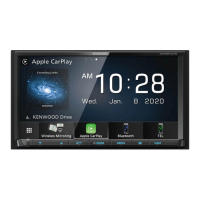
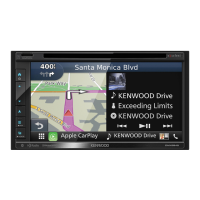
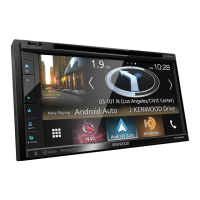



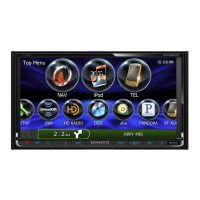
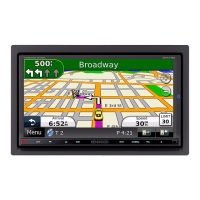
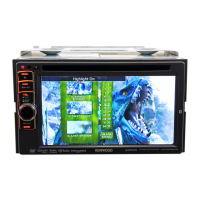



